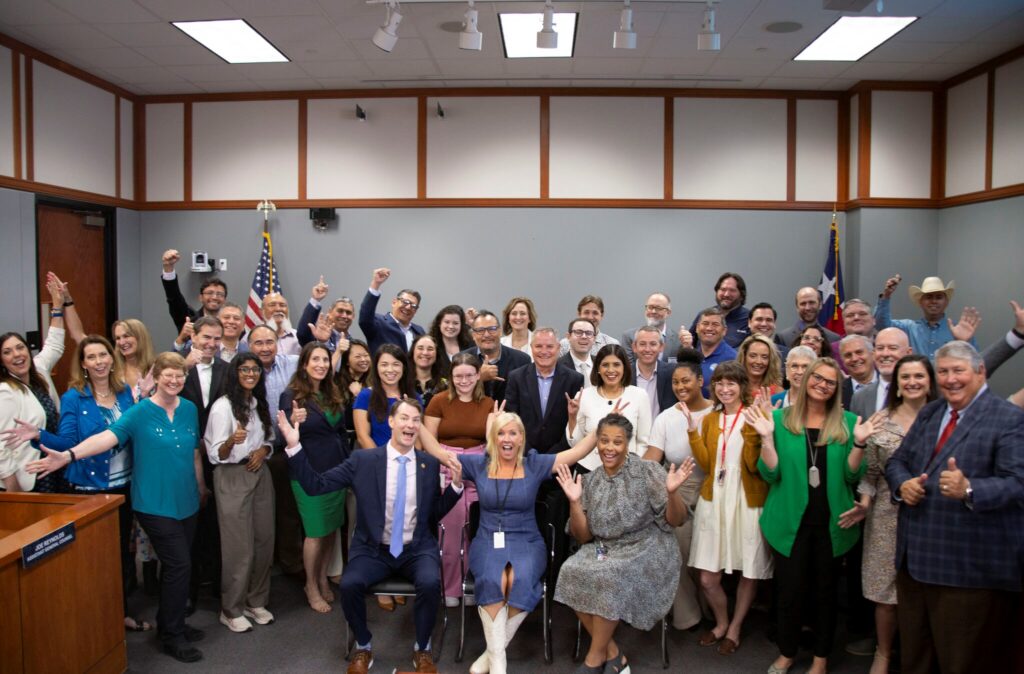Texas Water Development Board’s New Plan
Authors: Brooke T. Paup, Chairwoman, Texas Water Development Board & Reem J. Zoun, PE, CFM, ENV SP, Past President, and M.ASCE
For the past four years, the Texas Water Development Board has been working at a breakneck pace leading the state’s efforts to create the first-ever State Flood Plan for Texas. At the same time, the TWDB has led a parallel effort to finance over $530 million in flood mitigation projects at the same time.
This journey began in 2017, when the 85th Texas Legislature tasked the TWDB with conducting a State Flood Assessment. That assessment aimed to help stakeholders better understand flood planning, mitigation needs, and associated costs. That effort immediately took on increased urgency when Hurricane Harvey made landfall in August 2017. Although Texas has experienced flooding throughout its history, the losses of life and property during Hurricane Harvey brought the danger and severity of the flood hazard into sharper focus.
The State Flood Assessment was organized according to three key pillars of comprehensive flood risk management: mapping, planning, and mitigation. At the time, much of Texas was either unmapped or used out-of-date flood maps. Individual planning efforts were occurring, but those were undertaken in a largely uncoordinated and piecemeal fashion. Most importantly, stakeholders prioritized additional financial assistance to implement flood mitigation strategies.
In 2019, the 86th Texas Legislature passed Senate Bill 8 directing the undertaking of the state’s first comprehensive flood plan. The legislation laid out a new flood planning process that replicated the successful regionally driven water planning model that has served the state well for decades. Our state’s flood planning program is the first of its kind: a bottom-up, statewide, watershed-based flood planning effort. This was already going to be a monumentally difficult task to complete in a shortened timeframe, but the COVID pandemic made it even more challenging. However, the virtual meeting environment ended up being a blessing in disguise. The Regional Flood Planning Groups were able to hold almost 500 virtual and in-person meetings over the course of less than three years.
The Texas Water Development Board is a stakeholder-driven agency that literally could not do its job without the help of over 280 volunteer voting members, additional non-voting members, sponsors, technical consultants, and multitudes of stakeholders who participated in the regional planning process.
The projects recommended and ranked in the State Flood Plan are eligible to receive funding from the Flood Infrastructure Fund.
The 15 Regional Flood Planning Groups recommended over 4,500 flood risk reduction solutions in the regional flood plans, which will then be ranked in the 2024 State Flood Plan. These include flood management evaluations (FMEs), flood mitigation projects (FMPs), and flood management solutions (FMSs), which are now eligible to receive funding through the Flood Infrastructure Fund (FIF) program[1] administered by the TWDB.
While the first cycle of the planning process was a successful and herculean effort pulled off by the hard work of the Regional Flood Planning Groups, sponsors, technical consultants, TWDB staff, and numerous stakeholders, we learned some very important lessons. The following are some of what we are thinking about as we head into the second cycle.
Existing flood infrastructure assessment
The first cycle of regional flood planning produced a robust catalog of existing flood infrastructure – both natural and built – across the state. However, it became apparent that assessing the condition and functionality of existing infrastructure was a difficult task for the Regional Flood Planning Groups to perform. To help the planning groups in future cycles of regional flood planning, the TWDB has funded a project to develop readily usable planning-level infrastructure condition assessment methods, including a toolkit for assessing the condition of flood infrastructure at a regional planning level for future planning cycles. This research will also look at infrastructure assessment indicators currently identified in the TWDB Flood Planning Program and recommend enhancements as applicable.
Additional time and resources to recommend more flood risk reduction solutions
During the first cycle of regional flood planning, the TWDB acknowledged the expedited time frame that the Regional Flood Planning Groups were expected to identify, evaluate, and recommend flood risk reduction solutions in the 2023 Regional Flood Plans. The second round of regional and state flood planning will provide the planning groups the benefit of a longer overall planning period in which they will build on the information gathered during the first cycle. This will include the performance of already-recommended evaluations to identify the best alternatives for mitigating flood risk.
Awareness of the regional and state flood planning programs
It is expected that awareness of the flood planning process has expanded across the state during the first cycle of flood planning, and our hope is to continue to reach even the most remote and underserved areas of the state. This widespread understanding and knowledge will help to ensure that more communities, particularly in small, remote, and rural regions, will actively participate and engage in developing flood risk reduction solutions in their areas.
As the first cycle of the statewide regional flood planning effort is coming to a close, the TWDB is actively working to begin the second cycle. During its November board meeting, the board approved $38M for the second cycle of regional flood planning. In addition, we are working to generate Texas’s first ever State Flood Plan which will be complemented with a State Flood Plan Viewer. The 2024 State Flood Plan is due to the legislature on September 1st, 2024. Exciting times!

[1] https://www.twdb.texas.gov/financial/programs/FIF/index.asp
Photo Courtesy of Texas Water Development Board
Brooke T. Paup, Chairwoman, Texas Water Development Board. Brooke Paup was appointed to the Texas Water Development Board by Governor Greg Abbott on February 22, 2018. Before her appointment to the Board, Paup served as the director of legislative affairs for the Texas Comptroller of Public Accounts for the last four years. While there, she led a team of legislative professionals to address statutory tax reforms.
Reem J. Zoun, PE, CFM, ENV SP, Past President, and M.ASCE. Reem serves as the Director of Flood Planning at the Texas Water Development Board where her division is responsible for the delivery of the first Texas State and Regional Flood Plans. She has over 22 years of water resources engineering experience including over eight years of leadership and management experience. Her experience includes engineering, planning, and managing projects including capital improvement projects, storm drain projects, bridge upgrades, water planning, hydrologic and hydraulic modeling, wastewater system evaluation, and other engineering projects.


